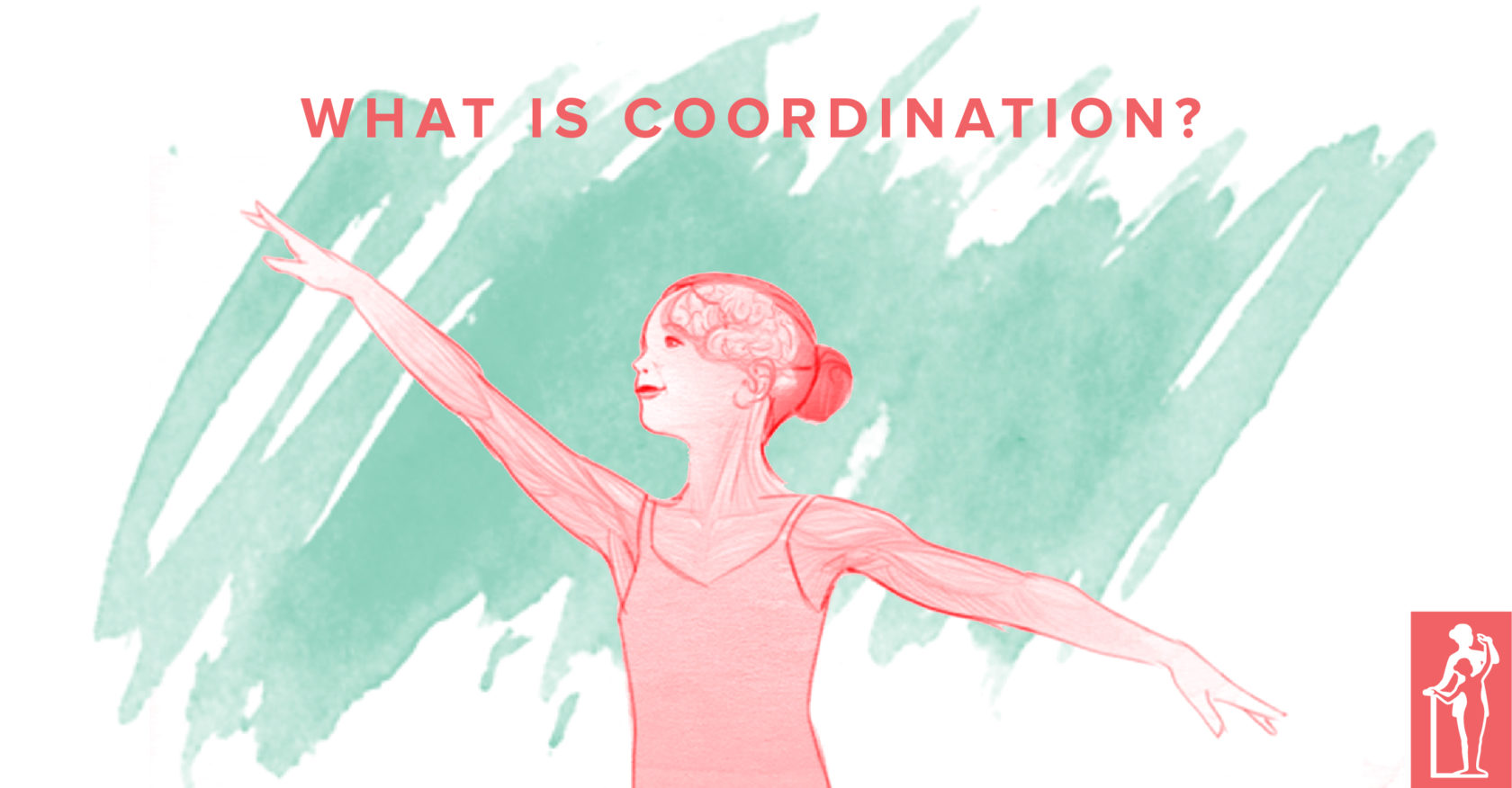
Without a thorough understanding of the principles of coordination, it is difficult for dance teachers to know what to expect and how to encourage the proper development of natural coordination. It is definitely a vital building block, fundamental even, for all dance technique, and the more we understand how it occurs naturally, the better we can foster its proper development in our students.
Let’s start with . . .
What Is Coordination?
Movement coordination is the
observable result of motor skill development. Motor skill development is the observable result of
purposeful movement experiences.
Purposeful movement is not accidental or random, but has been “planned” mentally by the person, to accomplish a movement and a result that the person wants to happen.
How Does Coordination Happen?
Coordination or Motor Skill development is programmed into the human body. It is programmed to happen without instruction. It will happen if enough of the appropriate natural movement experiences are available all during the growing years,
most particularly from birth to age 8. When coordination has not fully developed in an older student, it can usually be remedied by
providing some of the movement experiences that would have promoted its development in early childhood.
Coordination is simply
“teamwork” between the muscles involved in a movement, and the conscious thoughts of the individual. This is true whether the movement is familiar, or new. Certain patterns of movement that are repeatedly used become habits that no longer need detailed instructions from the brain. They are stored as complete units in the motor area of the brain, and can be set in motion by a single intent from the person’s conscious brain. Riding a bicycle is a standard example of using movement patterns that are learned, and which operate as
habits or learned reflexes.
This teamwork develops in sequential stages, each new level building on the foundation of all previous levels. Weakness at any level can cause a weakness throughout the entire system. Coordination begins when the infant first discovers that he or she can use the hand as a tool to reach, touch, take hold of something.
It Can Be a Lifetime of Learning!
Coordination never stops improving. Recent research has finally admitted that
the brain never stops learning and improving. Since motor skill development involves teamwork with the brain, it follows that our
coordination can continue to improve throughout our life.
Another fairly recent finding is that
movement is what stimulates brain activity, and brain development! Perhaps that is a part of why young children find movement to be so much fun!
Random Movement Is Where We Began
A newborn’s movements are mostly random, or without conscious purpose. During the first seven or eight years of life, the brain is busy
collecting and organizing information gathered by the body’s sensory systems, and it is busy turning
random movement into planned, purposeful movement. When an older person allows some of their movements to be random, they appear uncoordinated.
“Trial and error” movement is OK in a new, unlearned skill, but it is not what we consider usual in skills that are used often, such as walking across a room and avoiding the furniture; or opening a door without running into it. Trial and error are a part of the learning process, and need to
not be corrected all of the time. This is how the brain adds movement planning to the random movement, and creates coordination patterns, and sequences of muscular action that work well with gravity.
The foundation for coordination is purposeful or planned movement.
In ballet class, mimes and pantomimes that are discussed, and details of the movements worked out either individually, or as a class, can help students to
mentally direct their muscles. It will take time, probably a few weeks at least, for results to become apparent. Create an environment in your classes that allows for the process to take place, and you will bring up well-coordinated dancers.
Related Articles

Related
 Without a thorough understanding of the principles of coordination, it is difficult for dance teachers to know what to expect and how to encourage the proper development of natural coordination. It is definitely a vital building block, fundamental even, for all dance technique, and the more we understand how it occurs naturally, the better we can foster its proper development in our students.
Let’s start with . . .
Without a thorough understanding of the principles of coordination, it is difficult for dance teachers to know what to expect and how to encourage the proper development of natural coordination. It is definitely a vital building block, fundamental even, for all dance technique, and the more we understand how it occurs naturally, the better we can foster its proper development in our students.
Let’s start with . . .


Comments
No comments for this post.
Add Comment